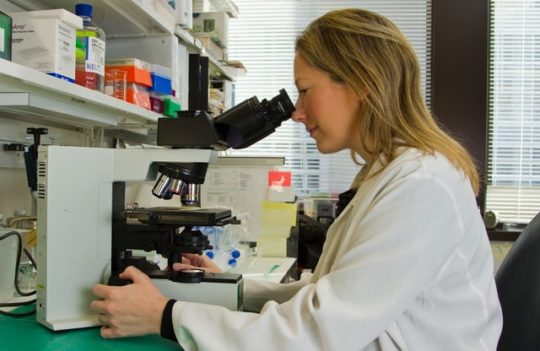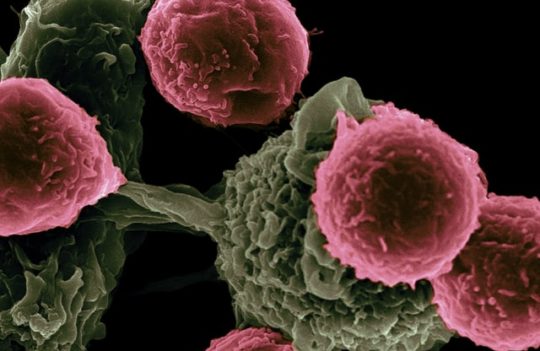Antibody Drug Conjugates (ADCs) in Cancer Therapy
In the relentless battle against cancer, researchers continually seek innovative strategies to enhance treatment efficacy while minimizing adverse effects on healthy tissues. The development of novel therapies that avoid the broad cytotoxic effects of chemotherapy is a beacon of hope for patients and healthcare professionals alike.
One promising avenue that has garnered significant attention is the development of antibody-drug conjugates (ADCs). This approach harnesses the specificity of monoclonal antibodies with the potency of cytotoxic drugs to deliver optimal outcomes.
Today, we're delving into ADCs – exploring their components, mechanisms of action, development, and therapeutic applications revolutionizing cancer therapy.
- What Are Antibody Drug Conjugates (ADCs)?
- Key Components of Antibody Drug Conjugates
- How Do ADCs Work in Cancer Therapy? Mechanisms of Action of ADCs
- 1. Targeted Delivery: A Precision Strike
- 2. Internalization and Intracellular Release
- 3. Potent Payloads Maximizing Lethality
- What Is the Difference Between Chemotherapy and Antibody Therapy?
- Development of Antibody Drug Conjugates: The Science Behind the Curtain
- The Growing Role of ADCs in Cancer Therapy: Redefining Treatment Paradigms
- Examples of Antibody Drug Conjugates for Cancer Therapy in Clinical Use
- Overcoming Challenges and Future Directions
- Pioneering Pathways: Harnessing the Potential of ADCs in Cancer Therapy
What Are Antibody Drug Conjugates (ADCs)?
Antibody Drug Conjugates, or ADCs for short, are precision-engineered biopharmaceutical drugs that marry the targeting capabilities of monoclonal antibodies with the cytotoxic potency of chemotherapy drugs. This marriage of specificity and lethality enables ADCs to selectively seek out and destroy cancer cells while leaving healthy cells unharmed, minimizing the collateral damage often associated with traditional chemotherapy.
The concept of targeted drugs was first proposed by German Nobel laureate Paul Ehrlich in 1900. He referred to them as “magic bullets” due to their precise targeting properties. Today, they are a promising and highly-explored alternative in the cancer therapy research area.
Key Components of Antibody Drug Conjugates
Antibody-drug conjugates are engineered to specifically recognize and bind to antigens overexpressed or unique to cancer cells, forming the basis of targeted cancer therapy. The following three constituents form this potent anti-tumor agent, delivering chemotherapy drugs directly and selectively to cancer cells.
- Monoclonal antibodies (mAbs): These are laboratory-engineered antibodies that specifically recognize and bind to cancer cell surface antigens. By targeting these antigens, mAbs facilitate the selective delivery of cytotoxic drugs to cancerous tissues while sparing healthy immune cells.
- Linkers: Linkers serve as the bridge between the monoclonal antibody and the cytotoxic drug. They are designed to be stable in circulation but capable of releasing the cytotoxic payload upon reaching the target cancer cells. Linkers play a crucial role in controlling the release of the cytotoxic drug from the antibody, ensuring optimal outcomes. There are two categories – cleavable and non-cleavable linkers. The non-cleavable linkers are gaining favor due to their potential to provide a broader therapeutic window, along with improved stability and tolerability.
- Cytotoxic drugs: Also known as payloads, these are potent chemical compounds capable of inducing cell death. Unlike traditional chemotherapy agents, which often lack specificity and cause widespread damage to healthy tissues, cytotoxic drugs in ADCs are precisely delivered to cancer cells, maximizing therapeutic efficacy while minimizing systemic toxicity.
How Do ADCs Work in Cancer Therapy? Mechanisms of Action of ADCs
An ADC is like a guided missile. The effectiveness of antibody-drug conjugates for cancer therapy stems from their intricate anticancer activity, which involves several key mechanisms. Ideally, this targeted approach minimizes side effects by increasing the specificity of cytotoxic drug delivery to reduce off-target effects compared to traditional chemotherapy.
Here’s how it works:
1. Targeted Delivery: A Precision Strike
Upon administration, the mAb component circulates throughout the body, seeking out the target antigen expressed on the surface of cancer cells. Once bound to the tumor-specific antigen, the ADC is internalized by the cancer cell through receptor-mediated endocytosis.
2. Internalization and Intracellular Release
Once inside the cell, the linker is cleaved, leading to the release of the cytotoxic drug. This targeted delivery system ensures that the chemotherapy drug is selectively unleashed within the confines of the tumor microenvironment, sparing surrounding healthy tissues from harm, thus reducing systemic toxicity.
3. Potent Payloads Maximizing Lethality
The choice of cytotoxic payload plays a pivotal role in determining the efficacy and effects of antibody-drug conjugates. These payloads can range from traditional chemotherapeutic agents to novel compounds with enhanced potency.
Once released within the cancer cell, the cytotoxic payload executes its lethal function on the cancer cell through various mechanisms, such as DNA damage, protein synthesis inhibition, or microtubule disruption. These mechanisms ultimately trigger a programmed cell death pathway called apoptosis.
Antibody conjugate drugs also facilitate enhanced penetration of therapeutic agents into solid tumors, overcoming barriers such as poor vascularization and interstitial pressure, which traditionally hindered drug delivery to tumor sites. This is extremely important in improving treatment outcomes and overcoming resistance in refractory cancers, offering new hope for patients facing challenges during the treatment of cancer.
What Is the Difference Between Chemotherapy and Antibody Therapy?
Chemotherapy, as implied by its name, utilizes chemical agents to target rapidly dividing cells, including both cancerous and healthy cells. However, it lacks specificity and can also harm healthy tissues, leading to debilitating side effects.
In contrast, antibodies are protein-based molecules that selectively target specific surface molecules present on cancer cells. Antibody therapy delivers cytotoxic drugs directly to cancer cells while sparing healthy tissues. This potentially leads to improved efficacy and reduced side effects compared to traditional chemotherapy.
Development of Antibody Drug Conjugates: The Science Behind the Curtain
Crafting ADCs involves a series of intricate steps, each crucial for ensuring their safety and efficacy:
- Generation of monoclonal antibodies: It all starts with the selection of a monoclonal antibody with high affinity to a target antigen abundantly expressed on cancer cells but sparingly on healthy cells. Monoclonal antibodies used in ADCs are typically generated through advanced techniques such as antibody phage display technology, B cell screening, or hybridoma technology.
- Selection of target antigen & payload: Choosing the right cancer antigen to target is a key factor for effective ADCs. Ideal targets are proteins that are highly expressed on the surface of tumor cells while minimally expressed or absent in normal cells and tissues, thus maximizing the therapeutic index of the ADC. The cytotoxic drug should also be potent.
- Conjugation of antibody with cytotoxic drug: Once the monoclonal antibody and cytotoxic drug are selected, they are chemically conjugated via a linker molecule. This conjugation process must be carefully optimized to ensure optimal stability, specificity, and drug-loading capacity of the ADC.
The Growing Role of ADCs in Cancer Therapy: Redefining Treatment Paradigms
The clinical development of ADCs has ushered in a new era of precision oncology, offering personalized treatment options tailored to individual patients based on the molecular profile of their tumors. By targeting specific antigens expressed on cancer cells, ADCs have the potential to overcome tumor heterogeneity and drug resistance – two formidable challenges that have long plagued conventional cancer therapies.
While initially developed for the treatment of hematologic malignancies, such as lymphoma and leukemia, ADCs are increasingly being explored for the management of solid tumors, including breast, lung, and ovarian cancer. This expansion into solid tumor therapy holds tremendous promise and clinical benefits, offering new hope to patients facing aggressive forms of cancer with limited treatment options.
In addition to standalone use, clinical studies are also investigating antibody-drug conjugates in cancer therapy in combination with other treatment modalities for tumor cells, such as immunotherapy, radiotherapy, and molecular targeted therapy. By harnessing the complementary mechanisms of different agents, these combination treatments aim to unleash synergistic effects, amplifying therapeutic efficacy while mitigating resistance mechanisms employed by cancer cells.
Examples of Antibody Drug Conjugates for Cancer Therapy in Clinical Use
The field of ADCs has witnessed remarkable progress in recent years, with several agents gaining approval from the FDA for the treatment of patients with various cancers due to their anti-tumor activity.
Some notable examples of antibody-drug conjugates on the market include:
- Ado-trastuzumab emtansine (Kadcyla): Approved for the treatment of HER2-positive breast cancer in 2013, Ado-trastuzumab emtansine combines the HER2-targeting monoclonal antibody trastuzumab with the microtubule inhibitor emtansine.
- Brentuximab vedotin (Adcetris): Indicated for the treatment of patients with Hodgkin lymphoma and systemic anaplastic large cell lymphoma by Seattle Genetics, Adcetris consists of an anti-CD30 antibody conjugated to the cytotoxic drug monomethyl auristatin E.
- Trastuzumab deruxtecan (Enhertu): Approved in 2019 for HER2-positive metastatic breast cancer, Enhertu combines trastuzumab with a topoisomerase I inhibitor, demonstrating impressive efficacy in patients with this type of advanced cancer.
- Gemtuzumab ozogamicin (Mylotarg): This was the first FDA-approved antibody-drug conjugate for treating acute myeloid leukemia initially approved in 2000 but later withdrawn due to toxicity concerns. However, it reclaimed its current status and was reintroduced in the US market in 2017.
- Enfortumab vedotin (Padcev): This nectin-4-directed antibody was designed for addressing advanced urothelial (bladder) cancer and was the second drug granted approval for clinical use in 2019.
- Inotuzumab Ozogamicin (Besponsa): Approved in 2017 for relapsed or refractory B-cell precursor acute lymphoblastic leukemia.
Other notable mentions include Sacituzumab govitecan (Trodelvy), Polatuzumab vedotin (Polivy), Cetuximab saratolacan (Akalux), Disitamab vedotin (Aidixi), and more.
Overcoming Challenges and Future Directions
Despite their immense potential, the antitumor activity of ADCs is not without its set of challenges, such as protein aggregation, immunogenicity problems, and potential drug resistance in cancer treatments. However, looking ahead, the field of ADCs holds boundless opportunities for innovation and advancement, with efforts underway to improve therapeutic outcomes for anticancer drugs.
From the exploration of novel antibody formats and chemical linkers to developing a next-generation of antibody-drug conjugates and payloads with enhanced potency and selectivity, researchers are continuously pushing the boundaries of what is possible in the realm of targeted cancer therapy.
Pioneering Pathways: Harnessing the Potential of ADCs in Cancer Therapy
Antibody Drug Conjugates represent a paradigm shift in the field of cancer therapy, offering a potent blend of precision targeting and cytotoxic potency for better patient outcomes. As our understanding of tumor biology deepens and technological advancements accelerate, ADC-based cancer therapeutics are poised to play an increasingly pivotal role in the fight against cancer, offering renewed hope to patients and clinicians alike.
Looking to elevate the effectiveness and reliability of your ADCs? Our dynamic and comprehensive antibody-drug conjugate services are your one-stop solution. With over two decades of expertise in ADC innovation, our platform integrates the XtenCHOᵀᴹ cell line’s productivity and click chemistry’s precision for antibody conjugation.
Schedule a consultation with our experts today to join the forefront of personalized cancer care.



